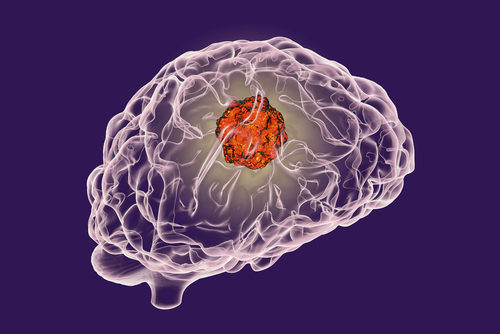Combining two experimental cancer vaccines with Libtayo (cemiplimab) promotes strong anti-tumor immune responses and shows early signs of effectiveness in adults newly diagnosed with glioblastoma — the most aggressive type of brain cancer —, according to interim data from a Phase 1/2 trial.
Developed by Inovio Pharmaceuticals, the DNA-based vaccines, called INO-5401 and INO-9012, are meant to boost anti-tumor immune responses, which can lead to cancer cell death.
Participants started the triple immunotherapy after surgery to remove their tumors. The treatment also could be followed by standard radiotherapy and chemotherapy, if clinically indicated.
The findings, “INO-5401 and INO-9012 delivered intramuscularly (IM) with electroporation (EP) in combination with cemiplimab (REGN2810) in newly diagnosed glioblastoma,” were presented at the virtual 2020 Society for Neuro-Oncology Annual Meeting, recently held online.
“This is a landmark combination trial in which a novel DNA vaccine is combined with a checkpoint inhibitor [Libtayo] and radiation and chemotherapy,” David Reardon, MD, the trial’s coordinating principal investigator, said in a press release.
“We look forward to continuing to review these data, with an eye towards those patients who are most likely to benefit from this innovative approach and to see whether, over time, there is an extension of survival in these very hard-to-treat patients,” said Reardon, also the clinical director of the center for neuro-oncology at the Dana-Farber Cancer Institute, in Boston.
Inovio plans to share additional trial data in the coming months, including potential links between immune responses and tissue data, as well as total treatment exposure and simultaneous medication use.
“Coupling immune response with clinical outcome may prove insightful,” Reardon added.
The INO-5401 vaccine works by promoting immune responses against WT1, hTERT, and PSMA — three proteins found at high levels in several cancer cell types, but minimally present in healthy cells. In turn, INO-9012 promotes the production of the IL-12 protein, which triggers the activation and expansion of immune T-cells, boosting anti-cancer responses.
Notably, these cancer vaccines may result in greater effectiveness when combined with immune checkpoint inhibitors, such as Libtayo, which work by preventing immune evasion mechanisms often used by cancer cells.
Jointly developed by Regeneron Pharmaceuticals and Sanofi, Libtayo blocks the interaction between the PD-1 receptor in T-cells and its ligand PD-L1 in cancer cells, boosting anti-cancer responses and promoting cancer cell death.
It is approved in the U.S. and Europe for the treatment of adults with metastatic or locally advanced cutaneous squamous cell carcinoma, a common form of skin cancer, who are not good candidates for surgery or radiotherapy.
The ongoing, multi-center, Phase 1/2 trial (NCT03491683) is evaluating the safety and preliminary effectiveness of combining INO-5401 and INO-9012 with Libtayo in 52 adults with newly diagnosed glioblastoma who underwent surgery to remove their tumor.
Patients also may receive post-surgery standard treatment with radiation and the chemotherapy temozolomide, if needed. The trial’s enrollment was completed early last year.
INO-5401 (9 mg) and INO-9012 (1 mg) are administered into the muscle every three weeks for the first four doses, and then every nine weeks, while Libtayo is given directly into the bloodstream every three weeks. Participants will receive the triple combo until signs of disease progression, study withdrawal, or intolerable toxicity.
With a median age of 60, the participants were divided into two groups, depending on their MGMT promoter methylation status — considered a predictive factor for response to temozolomide.
Group A included 32 patients whose tumors were less susceptible to temozolomide and therefore more difficult to treat, and group B comprised 20 participants whose tumors were likely to respond better to the chemotherapy.
Interim results showed that 50% of those with more difficult-to-treat tumors and 70% of patients in group B were alive after 18 months (1.5 years). Individuals in group A lived for a median of 17.9 months, which compares favorably with historical controls, Inovio stated in the release.
Since more than half of group B patients were still alive, their median overall survival could not be assessed. Of note, the median overall survival for people with glioblastoma given standard of care treatment is about 15-22 months.
In addition, immune responses against one or more of the cancer proteins meant to be targeted after INO-5401 treatment were observed in 86% of patients in group A and 94% of those in group B.
The combination therapy was generally well-tolerated, with a safety profile consistent with that reported for each individual therapy.
“INO-5401 + INO-9012, with Libtayo and [radiotherapy/Temodar], generates cancer antigen-specific T cells that may be able to attack [glioblastoma] and provide a survival advantage,” said Jeffrey Skolnik, MD, senior vice president of Inovio’s clinical development.
This combination also appears to have an “acceptable risk/benefit,” the researchers wrote in the abstract.
“We are using our knowledge of immunology to define a patient population for which this novel DNA medicine plus checkpoint inhibitor combination may offer a survival advantage,” Skolnik said.


